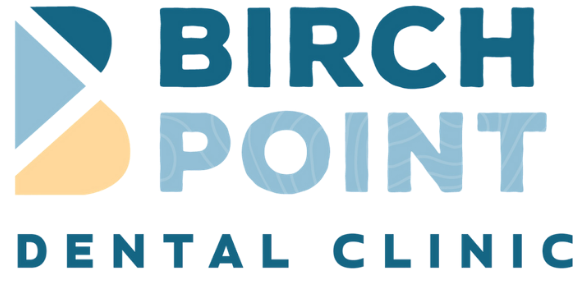Laser technology has transformed many aspects of healthcare, and dentistry is no exception. At Birch Point Dental Clinic in Thunder Bay, ON, Dr. Sanket Upadhyay utilizes advanced laser technology to enhance patient care and improve outcomes in a variety of dental procedures. Lasers offer a range of benefits, from increased precision to faster healing times, making them an invaluable tool in modern dentistry.
Understanding Laser Technology in Dentistry
Lasers, which stand for Light Amplification by Stimulated Emission of Radiation, work by delivering energy in the form of light. In dental applications, lasers can be used on both hard tissues (like teeth) and soft tissues (like gums). The type of laser and the wavelength used will vary depending on the procedure, allowing for highly targeted and effective treatments.
- Hard Tissue Lasers: Hard tissue lasers are primarily used on teeth. These lasers can precisely cut or shape bone and tooth structure, making them ideal for procedures such as cavity preparation and tooth sensitivity treatments. The laser’s precision allows for the removal of decayed areas without damaging surrounding healthy tissue, preserving more of the natural tooth structure.
- Soft Tissue Lasers: Soft tissue lasers are used for procedures involving the gums and other soft tissues in the mouth. These lasers are particularly useful in treating gum disease, reshaping gum lines, and performing biopsies. Soft tissue lasers promote faster healing and minimize discomfort because they can seal blood vessels and nerve endings as they work.
Applications of Laser Technology in Dental Procedures
- Cavity Detection and Treatment: Lasers can be used for early detection of cavities, even before they become visible on traditional x-rays. By detecting cavities at an early stage, dentists can intervene sooner, using less invasive treatments. For treating cavities, lasers can remove decay and prepare the tooth for a filling without the need for a traditional drill. This approach is not only more comfortable for the patient but also reduces the need for anesthesia.
- Gum Disease Treatment: Periodontal disease, or gum disease, is a common condition that can lead to tooth loss if left untreated. Lasers are highly effective in treating gum disease by removing infected tissue and bacteria from the periodontal pockets. The laser’s precision allows for targeted treatment, reducing the impact on healthy tissue. Additionally, lasers can help promote the regeneration of healthy gum tissue, leading to better overall outcomes.
- Root Canal Therapy: Laser-assisted root canal therapy is another application where lasers shine. During a root canal, the infected pulp is removed, and the inside of the tooth is cleaned and sealed. Lasers can help sterilize the area more effectively, reducing the risk of infection and improving the success rate of the procedure. The use of lasers can also shorten the treatment time and enhance patient comfort.
- Teeth Whitening: Lasers are also used in cosmetic dentistry, particularly in teeth whitening procedures. Laser teeth whitening involves applying a bleaching agent to the teeth and then activating it with a laser. The laser speeds up the whitening process, providing faster and more dramatic results. Patients can achieve a brighter smile in a shorter amount of time compared to traditional whitening methods.
- Biopsies and Lesion Removal: Lasers are invaluable in performing biopsies and removing lesions in the mouth. When a suspicious area needs to be examined for oral cancer or other conditions, a laser can be used to remove a small tissue sample with minimal discomfort. The precision of the laser reduces bleeding and promotes faster healing. In cases where benign lesions need to be removed, lasers provide a minimally invasive option that results in less scarring and quicker recovery.
- Crown Lengthening: Crown lengthening is a procedure that reshapes the gum tissue and bone to expose more of the tooth’s structure. This procedure may be necessary for placing crowns or for improving the appearance of a gummy smile. Lasers allow for precise removal of excess gum tissue, resulting in a more aesthetically pleasing outcome with less post-operative discomfort.
- Tongue-Tie Release (Frenectomy): A tongue-tie, or ankyloglossia, is a condition where the strip of tissue (frenulum) connecting the tongue to the floor of the mouth is too short, restricting tongue movement. This condition can cause difficulties with speech, eating, and breastfeeding in infants. A laser frenectomy is a quick and effective procedure to release the tongue-tie. The laser cauterizes as it cuts, reducing bleeding and minimizing the need for sutures.
The Benefits of Laser Dentistry
- Minimized Discomfort: One of the most significant benefits of laser dentistry is the reduction in discomfort during and after procedures. Lasers are less invasive than traditional methods, meaning that there is often less need for anesthesia, and patients experience less pain and swelling. This is particularly beneficial for patients who have dental anxiety or are sensitive to dental procedures.
- Faster Healing Times: Laser procedures typically result in faster healing times compared to traditional methods. The laser’s ability to seal blood vessels and nerve endings during treatment minimizes bleeding and swelling, which contributes to quicker recovery. Patients can often return to their normal activities sooner, with less post-operative care required.
- Greater Precision and Accuracy: Lasers offer unparalleled precision, allowing dentists to target specific areas without affecting surrounding tissues. This level of accuracy is particularly important in procedures like cavity preparation and gum reshaping, where preserving healthy tissue is crucial. The precision of lasers also means that procedures can often be completed more quickly and with fewer complications.
- Reduced Risk of Infection: The use of lasers in dental procedures reduces the risk of infection. Lasers sterilize the treatment area as they work, killing bacteria and minimizing the chance of post-operative infections. This is especially important in procedures like root canals, where sterilization is critical to the success of the treatment.
- Enhanced Patient Experience: The combination of less discomfort, faster healing times, and more precise treatments contributes to an overall enhanced patient experience. Patients are more likely to feel at ease during laser procedures, and the improved outcomes lead to higher satisfaction with their dental care.
Embracing the Future of Dentistry with Laser Technology
The integration of laser technology into dental practice represents a significant leap forward in patient care. At Birch Point Dental Clinic in Thunder Bay, ON, Dr. Sanket Upadhyay is committed to offering the latest advancements in dental technology to ensure that patients receive the highest standard of care. Whether it’s for treating gum disease, performing a root canal, or enhancing the aesthetics of your smile, lasers play a crucial role in delivering effective and comfortable dental treatments.
Looking Forward: The Continuing Evolution of Laser Dentistry
As laser technology continues to advance, we can expect even more applications and benefits in the field of dentistry. The future holds exciting possibilities for further enhancing precision, reducing treatment times, and improving patient outcomes. At Birch Point Dental Clinic, we are dedicated to staying at the forefront of these developments to provide our patients with the best possible care. By embracing laser technology, we are not only improving dental procedures but also redefining the patient experience in modern dentistry.
Sources:
- Parker, S. (2007). “Lasers in Dentistry: An Overview.” British Dental Journal.
- Miserendino, L. J., & Pick, R. M. (1995). “Lasers in Dentistry.” Quintessence Publishing.
- Genovese, M. D., & Olivi, G. (2010). “Laser in Pediatric Dentistry: Patient Acceptance of Hard and Soft Tissue Therapy.” European Archives of Paediatric Dentistry.





